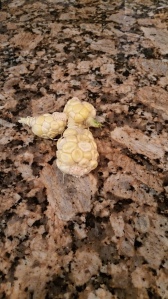Without refrigeration or canned goods, food was prepared from scratch, usually three times a day. Breakfast might consist of mush, pancakes, eggs – familiar food. Supper was a usually a light meal of leftovers from the noon dinner or mush and milk.
So cooking was all day, every day. Churning butter and making cheese, smoking meat (men did the butchering but women took care of the meat afterward) and all the food preservation had to be fitted in around the basic cooking. Churning butter, for example, was a time consuming process. It was usually handed off to a child but since it took skill to pat the butter into crocks this was a task reserved for Mother.
Cheese making was another skill. Everything had to be spotless and the temperatures just so.
Women prepared meals over an open fire or on the hearth of a fireplace. (The average household used between 30 and 40 cords of wood a year – equal to about one acre of timber). Stoves had been invented by then. Immigrants who came from countries with wood shortages brought tile stoves. Ben Franklin invented a stove in 1741 – but that were not designed for cooking. The 1800s saw the development of stoves – heavy cast iron devices that h led eventually to the large ranges – but they did not take off until after 1815 or so, until then women cooked over an open fire. If the fire went out during the night, a child might be dispatched to a neighbor for a coal. Otherwise a tinderbox might be used. I’ve seen people demonstrate cooking over an open fire. One woman, who is very experienced at these demonstrations, took three hours to get the fire started.
As we all know an even temperature is not possible with an open fire. Some of the early fireplaces had ovens for bread and other baked goods built into the brick surround. It must have been quite an art to determine the right temperature for bread or other food. It also explains the boiled desserts and breads: i.e. Boston brown bread or the boiled puddings. So much easier to boil something in a mold without worrying about the temperature. Think about A Christmas Carol by Dickens and the Christmas dinner at the Cratchit house. The turkey had to be roasted elsewhere and the Christmas pudding was boiled.
Baked goods, while I’m on the subject, were stored in crocks but without plastic wrap, went stale pretty quickly. Baking therefore had to be undertaken several times every week.
Most women used the hearth as a cook surface and a variety of pans to cook on it near the fire. The spider, a three-legged pan, was one such piece of equipment used to bake food. The Dutch over was another. Placed on the hearth, they baked the food slowly in the heat from the fire. Women could then turn their attention to other chores.
Fireplaces had look swinging handles that could be pushed over the fire to heat water or cook stew. Some of the big pots that women were lifting from floor level, however, weighed 60 pounds. Yes, sixty, and that’s empty. Now add water and meat. Add that to the likelihood of burning, not only the food, but you as well and cooking was certainly a challenge. So much for the weaker sex.
A final note: The stoves and ranges, although an advance over cooking over an open fire, were known to be temperamental. Contemporary accounts from that period talk about the necessary training a girl had to have before she could really use one of the stoves.




